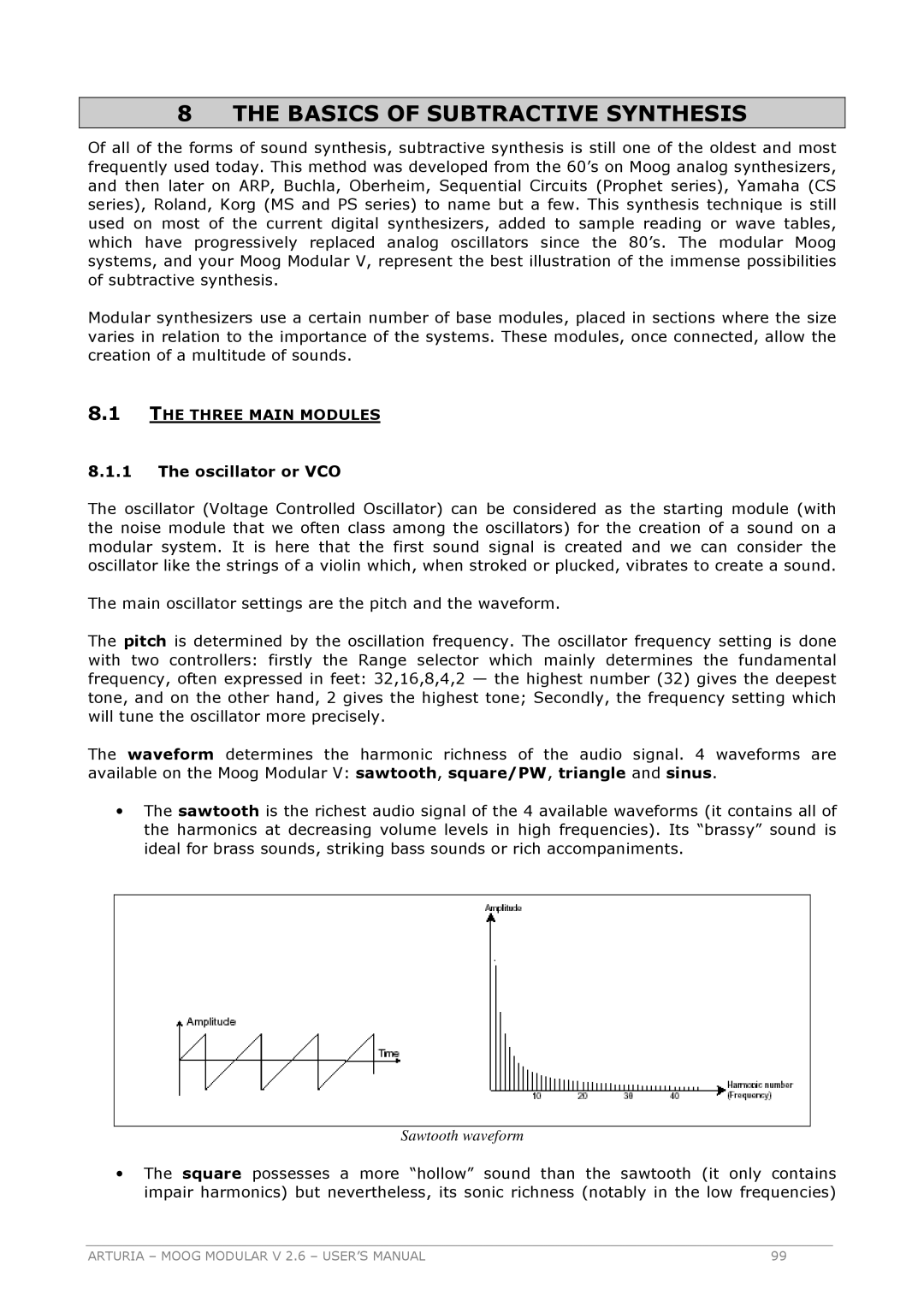
8THE BASICS OF SUBTRACTIVE SYNTHESIS
Of all of the forms of sound synthesis, subtractive synthesis is still one of the oldest and most frequently used today. This method was developed from the 60’s on Moog analog synthesizers, and then later on ARP, Buchla, Oberheim, Sequential Circuits (Prophet series), Yamaha (CS series), Roland, Korg (MS and PS series) to name but a few. This synthesis technique is still used on most of the current digital synthesizers, added to sample reading or wave tables, which have progressively replaced analog oscillators since the 80’s. The modular Moog systems, and your Moog Modular V, represent the best illustration of the immense possibilities of subtractive synthesis.
Modular synthesizers use a certain number of base modules, placed in sections where the size varies in relation to the importance of the systems. These modules, once connected, allow the creation of a multitude of sounds.
8.1THE THREE MAIN MODULES
8.1.1The oscillator or VCO
The oscillator (Voltage Controlled Oscillator) can be considered as the starting module (with the noise module that we often class among the oscillators) for the creation of a sound on a modular system. It is here that the first sound signal is created and we can consider the oscillator like the strings of a violin which, when stroked or plucked, vibrates to create a sound.
The main oscillator settings are the pitch and the waveform.
The pitch is determined by the oscillation frequency. The oscillator frequency setting is done with two controllers: firstly the Range selector which mainly determines the fundamental frequency, often expressed in feet: 32,16,8,4,2 — the highest number (32) gives the deepest tone, and on the other hand, 2 gives the highest tone; Secondly, the frequency setting which will tune the oscillator more precisely.
The waveform determines the harmonic richness of the audio signal. 4 waveforms are available on the Moog Modular V: sawtooth, square/PW, triangle and sinus.
∙The sawtooth is the richest audio signal of the 4 available waveforms (it contains all of the harmonics at decreasing volume levels in high frequencies). Its “brassy” sound is ideal for brass sounds, striking bass sounds or rich accompaniments.
Sawtooth waveform
∙The square possesses a more “hollow” sound than the sawtooth (it only contains impair harmonics) but nevertheless, its sonic richness (notably in the low frequencies)
ARTURIA – MOOG MODULAR V 2.6 – USER’S MANUAL | 99 |
